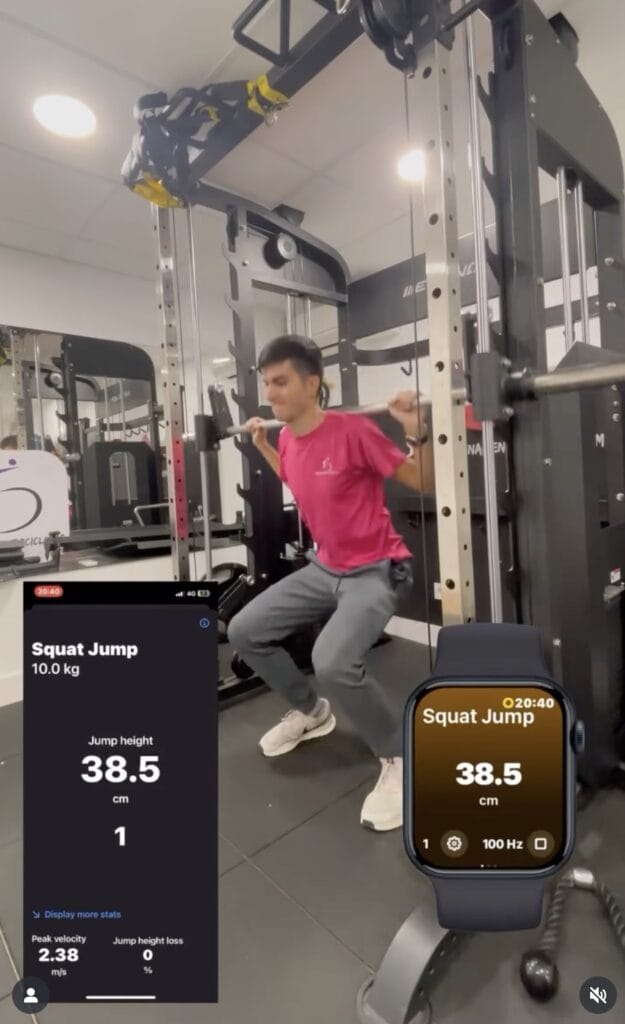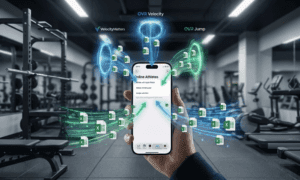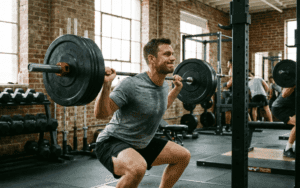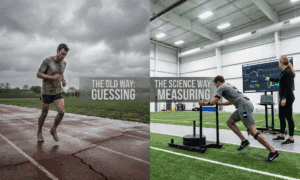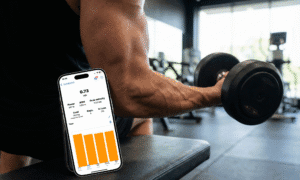For several years, we’ve been publishing data showing that Spleeft is a reliable tool for measuring movement velocity. More recently, we’ve expanded and optimized the app to also measure jump height, recognizing it as another key metric for monitoring both training effectiveness and the fatigue it generates.
DOWNLOAD SPLEEFT APP NOW FOR iOS, ANDROID AND APPLE WATCH!
A Complex Metric
Although it might seem simple, accurately measuring jump height is a complex task. Soon, we’ll release a white paper detailing the research process and the reasoning behind the methodology we’ve adopted—specifically, how we determined which definition of jump height provides the highest validity when applied to our technology. This article provides a brief summary of that result.
Using Motion Capture as a Gold Standard
After extensive testing, we found that the definition of jump height that best aligned with our technology was the displacement of the body’s center of mass (COM)—from a stationary standing position to the peak of the jump. This approach has been used in other scientific studies and reflects the most traditional definition of vertical jump height.
To extract these values, we developed a Python script to process the vertical position data captured by an STT Systems motion capture system sampling at 100 Hz. The final jump height was calculated as the difference between the COM’s position in the initial standing phase—when the athlete’s full foot was in contact with the ground—and the maximum height reached during the jump.
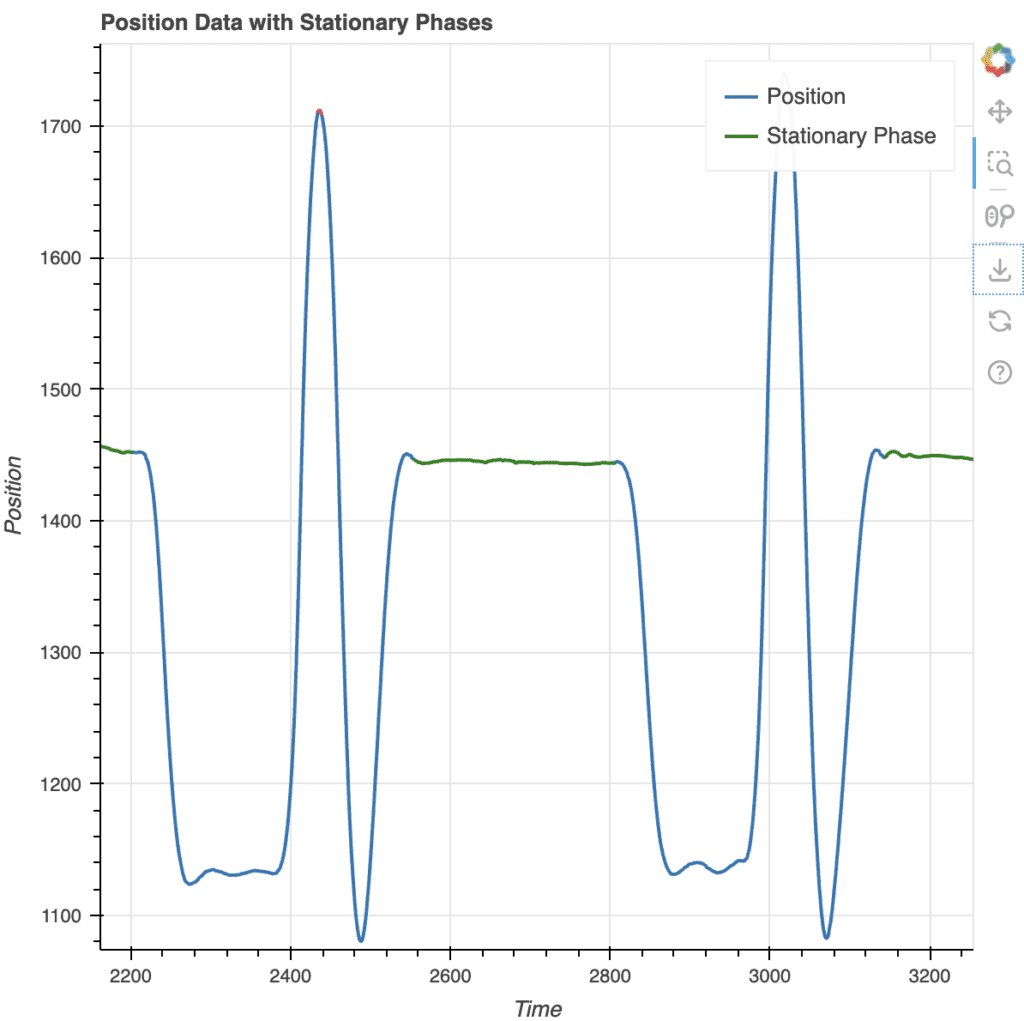
Compared to a more common method like Optojump, this COM-based approach produces values that are, on average, 10 cm higher. This is largely due to differences in how each system defines take-off. Contact-based systems detect flight only after the toes leave the ground, whereas in the COM-based approach, flight begins as soon as the heel lifts off.
What is the Average Error of the App to measure the jump height?
We found a strong correlation between jump height measured with Spleeft on an Apple Watch Series 8 at 200 Hz and the STT motion capture system at 100 Hz, with r² = 0.957.
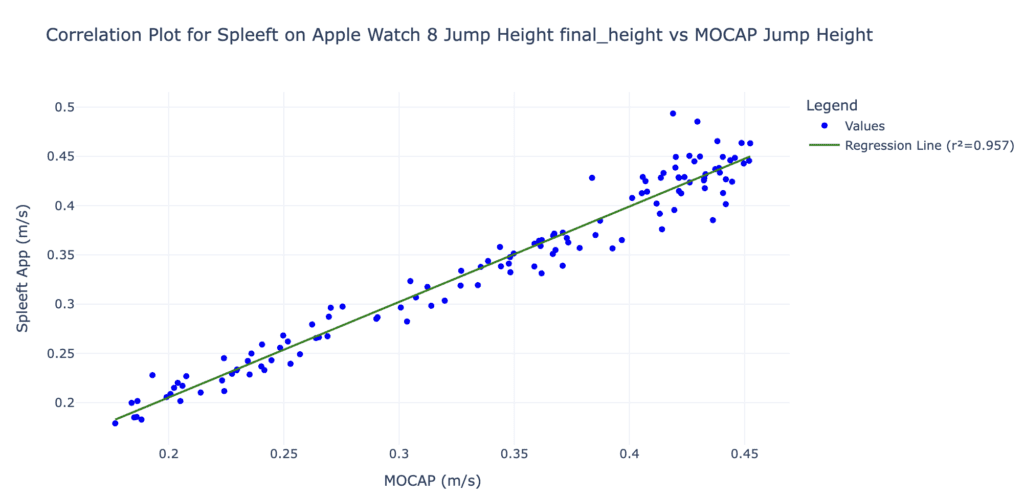
The mean absolute error was just 1.3 cm, and—more importantly—it remained consistently low across a range of jump heights. For jumps between 10 and 20 cm, the average error was 1.0 cm. For jumps between 40 and 50 cm, it only increased slightly to 1.6 cm.
Additionally, a Bland–Altman analysis confirmed the absence of systematic bias, as anticipated. The confidence interval of the error is very similar to that reported in validation studies of other apps, such as My Jump 2.
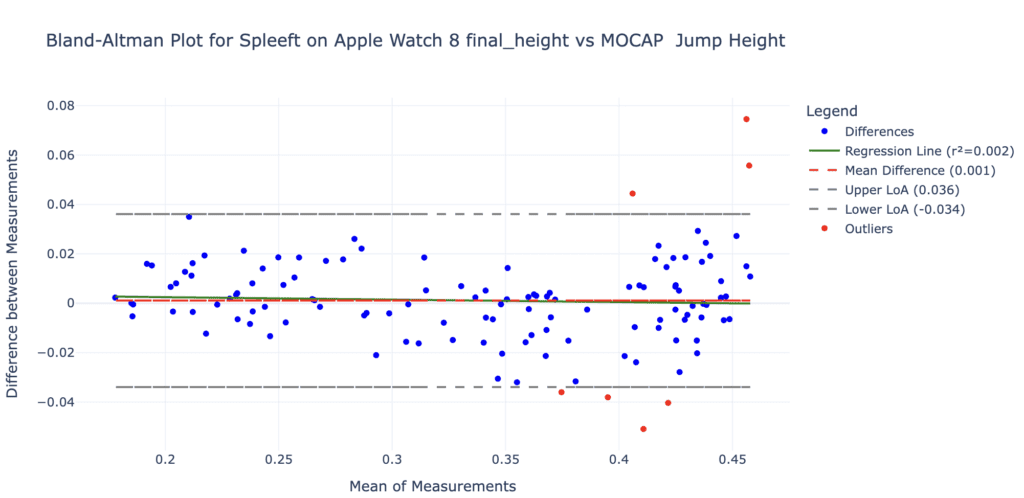
In our experiments, we realized the importance of performing a correct landing phase in jumps by flexing the knees and without locking them. This is important for maintaining data reliability, as well as good joint health. Each technology has its considerations. On contact platforms, for example, care must be taken not to flex the legs during the flight phase, as this can lead to overestimations.
The Value of Day-to-Day Monitoring: Where the Real Impact Lies
In the field of velocity-based training and the development of related technologies, a great deal of emphasis is placed on scientific validity and reliability—and rightly so. Because we collect data over such short timeframes, even small inaccuracies can lead to significant errors.
One of the most commonly used assessments in research is the test–retest protocol. However, real-world user feedback based on actual training data is equally valuable. The chart below illustrates the day-to-day stability of jump height measurements using Spleeft.
It clearly shows trends related to performance improvement and detraining, as well as occasional drops likely related to fatigue. That said, most of the data were collected following a rest day, with the squat jump typically being the first exercise in the session—conditions that help explain the observed patterns.
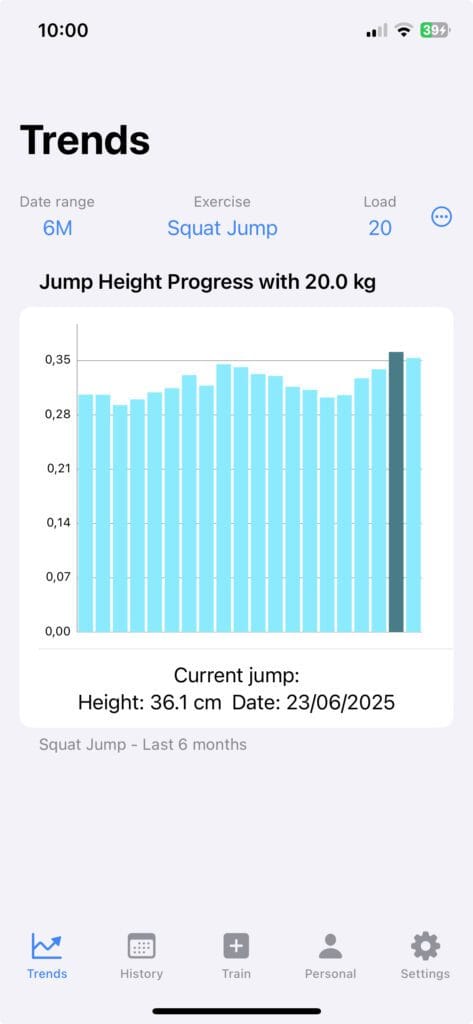
Iván de Lucas Rogero
MSC Physical Performance & CEO SpleeftApp
Dedicated to improving athletic performance and cycling training, combining science and technology to drive results.

